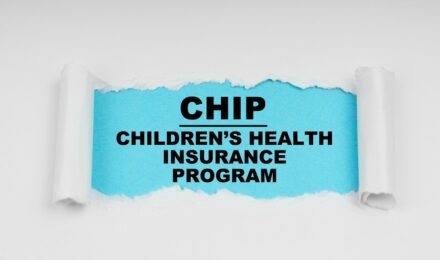Contents
Access to quality healthcare is essential for the healthy development of children, forming the foundation for a thriving future generation. The Affordable Care Act (ACA), complemented by the Children’s Health Insurance Program (CHIP), has been instrumental in addressing healthcare gaps for children from low-income families. This transformative legislation ensures every child has access to essential medical services. Can we truly claim equity if our children’s health remains underserved?
The Impact of Insurance Coverage
Health insurance coverage transforms lives. Through Medicaid and CHIP, 37% of children in the United States now have insurance coverage—a monumental step toward universal healthcare. In 23 states, the uninsured rate for children is below 8%, while only seven states report uninsured rates exceeding 12%. These statistics, while encouraging, leave room for improvement. Although Medicaid’s limited provider network presents challenges, community health centers and government clinics fill critical gaps, ensuring children’s medical needs are not neglected.
Low-income families often face daunting obstacles when relocating across state lines. Job opportunities or family obligations frequently drive these moves. The maze of state-specific Medicaid and CHIP regulations can confuse even the most resourceful parents. Ensuring continuous healthcare coverage for children during these transitions demands vigilance and resilience. Isn’t it time we simplified the system to alleviate unnecessary stress for families?
Addressing Income-Based Gaps
Income thresholds for Medicaid and CHIP create distinct pathways to coverage. Medicaid typically supports families reliant on welfare, social security, or unemployment benefits. CHIP, however, steps in for lower-middle-income families—those earning too much for Medicaid yet too little for private insurance. This nuanced structure provides a crucial safety net for families in flux. For young parents navigating entry-level jobs or uncertain industries, CHIP offers not just stability but hope for their children’s future.
Quality of Care Under CHIP
CHIP delivers unexpectedly high-quality care. Children covered by CHIP receive healthcare comparable to those with private insurance, a lifeline for working-class families striving to make ends meet. Under the ACA, CHIP extends its provisions to young adults up to age 26, ensuring uninterrupted care during formative years. Isn’t it reassuring that children in underserved areas can access the care they need, regardless of their parents’ financial circumstances?
Enhancing Program Permanency
CHIP deserves permanence. Its reauthorization cycle in Congress breeds uncertainty that undermines long-term planning. Eliminating waiting periods—still mandated in about a dozen states—would dramatically enhance accessibility. These bureaucratic hurdles, though surmountable, place undue stress on families already grappling with daily challenges. Why should children’s health depend on political debates?
Trends in Pediatric Healthcare
Healthcare trends are concerning. A nationwide shortage of providers, coupled with surging patient volumes, limits the time physicians can dedicate to each child. For children, this lack of interaction is particularly harmful. Building trust takes time—time many doctors no longer have. How can children articulate their fears or symptoms if they don’t feel heard? Ensuring accessible, high-quality primary care must remain a priority.
Addressing Special Needs
Children with special healthcare needs face unique challenges. CHIP ensures they receive the same comprehensive services as those with private insurance. This inclusivity fosters healthier, more fulfilling lives. It empowers children to achieve milestones once thought unattainable, transforming systemic inequities into opportunities for growth. Doesn’t every child deserve the chance to thrive?
Bridging Racial Disparities
CHIP’s impact is particularly pronounced among Black and Hispanic children. Coverage rates for these groups are significantly higher compared to white and Asian peers. Over half of Black and Hispanic children benefit from CHIP or Medicaid. By addressing racial disparities, the program fosters equitable opportunities. This inclusivity is not merely aspirational; it is foundational to a just society.
Opportunities for Improvement
Despite its successes, CHIP is not without flaws. Income eligibility thresholds must account for inflation to prevent families from slipping through the cracks. Standardizing state-level implementation would reduce disparities and streamline processes. These reforms, though complex, are achievable. Shouldn’t we aim for a system where no child’s health is compromised by administrative inefficiencies?
The ACA and CHIP collectively embody the nation’s commitment to ensuring healthcare access for children. By addressing systemic barriers and implementing strategic reforms, these programs pave the way for a healthier, more equitable future for all.
Resources
- Centers for Medicare & Medicaid Services (CMS) – cms.gov
Comprehensive information on CHIP and Medicaid programs. - HealthCare.gov – healthcare.gov
A detailed guide to ACA provisions and enrollment assistance. - American Academy of Pediatrics (AAP) – aap.org
Expert insights and resources on pediatric healthcare.
Contents
Access to quality healthcare is essential for the healthy development of children, forming the foundation for a thriving future generation. The Affordable Care Act (ACA), complemented by the Children’s Health Insurance Program (CHIP), has been instrumental in addressing healthcare gaps for children from low-income families. This transformative legislation ensures every child has access to essential medical services. Can we truly claim equity if our children’s health remains underserved?
The Impact of Insurance Coverage
Health insurance coverage transforms lives. Through Medicaid and CHIP, 37% of children in the United States now have insurance coverage—a monumental step toward universal healthcare. In 23 states, the uninsured rate for children is below 8%, while only seven states report uninsured rates exceeding 12%. These statistics, while encouraging, leave room for improvement. Although Medicaid’s limited provider network presents challenges, community health centers and government clinics fill critical gaps, ensuring children’s medical needs are not neglected.
Low-income families often face daunting obstacles when relocating across state lines. Job opportunities or family obligations frequently drive these moves. The maze of state-specific Medicaid and CHIP regulations can confuse even the most resourceful parents. Ensuring continuous healthcare coverage for children during these transitions demands vigilance and resilience. Isn’t it time we simplified the system to alleviate unnecessary stress for families?
Addressing Income-Based Gaps
Income thresholds for Medicaid and CHIP create distinct pathways to coverage. Medicaid typically supports families reliant on welfare, social security, or unemployment benefits. CHIP, however, steps in for lower-middle-income families—those earning too much for Medicaid yet too little for private insurance. This nuanced structure provides a crucial safety net for families in flux. For young parents navigating entry-level jobs or uncertain industries, CHIP offers not just stability but hope for their children’s future.
Quality of Care Under CHIP
CHIP delivers unexpectedly high-quality care. Children covered by CHIP receive healthcare comparable to those with private insurance, a lifeline for working-class families striving to make ends meet. Under the ACA, CHIP extends its provisions to young adults up to age 26, ensuring uninterrupted care during formative years. Isn’t it reassuring that children in underserved areas can access the care they need, regardless of their parents’ financial circumstances?
Enhancing Program Permanency
CHIP deserves permanence. Its reauthorization cycle in Congress breeds uncertainty that undermines long-term planning. Eliminating waiting periods—still mandated in about a dozen states—would dramatically enhance accessibility. These bureaucratic hurdles, though surmountable, place undue stress on families already grappling with daily challenges. Why should children’s health depend on political debates?
Trends in Pediatric Healthcare
Healthcare trends are concerning. A nationwide shortage of providers, coupled with surging patient volumes, limits the time physicians can dedicate to each child. For children, this lack of interaction is particularly harmful. Building trust takes time—time many doctors no longer have. How can children articulate their fears or symptoms if they don’t feel heard? Ensuring accessible, high-quality primary care must remain a priority.
Addressing Special Needs
Children with special healthcare needs face unique challenges. CHIP ensures they receive the same comprehensive services as those with private insurance. This inclusivity fosters healthier, more fulfilling lives. It empowers children to achieve milestones once thought unattainable, transforming systemic inequities into opportunities for growth. Doesn’t every child deserve the chance to thrive?
Bridging Racial Disparities
CHIP’s impact is particularly pronounced among Black and Hispanic children. Coverage rates for these groups are significantly higher compared to white and Asian peers. Over half of Black and Hispanic children benefit from CHIP or Medicaid. By addressing racial disparities, the program fosters equitable opportunities. This inclusivity is not merely aspirational; it is foundational to a just society.
Opportunities for Improvement
Despite its successes, CHIP is not without flaws. Income eligibility thresholds must account for inflation to prevent families from slipping through the cracks. Standardizing state-level implementation would reduce disparities and streamline processes. These reforms, though complex, are achievable. Shouldn’t we aim for a system where no child’s health is compromised by administrative inefficiencies?
The ACA and CHIP collectively embody the nation’s commitment to ensuring healthcare access for children. By addressing systemic barriers and implementing strategic reforms, these programs pave the way for a healthier, more equitable future for all.
Resources
- Centers for Medicare & Medicaid Services (CMS) – cms.gov
Comprehensive information on CHIP and Medicaid programs. - HealthCare.gov – healthcare.gov
A detailed guide to ACA provisions and enrollment assistance. - American Academy of Pediatrics (AAP) – aap.org
Expert insights and resources on pediatric healthcare.






